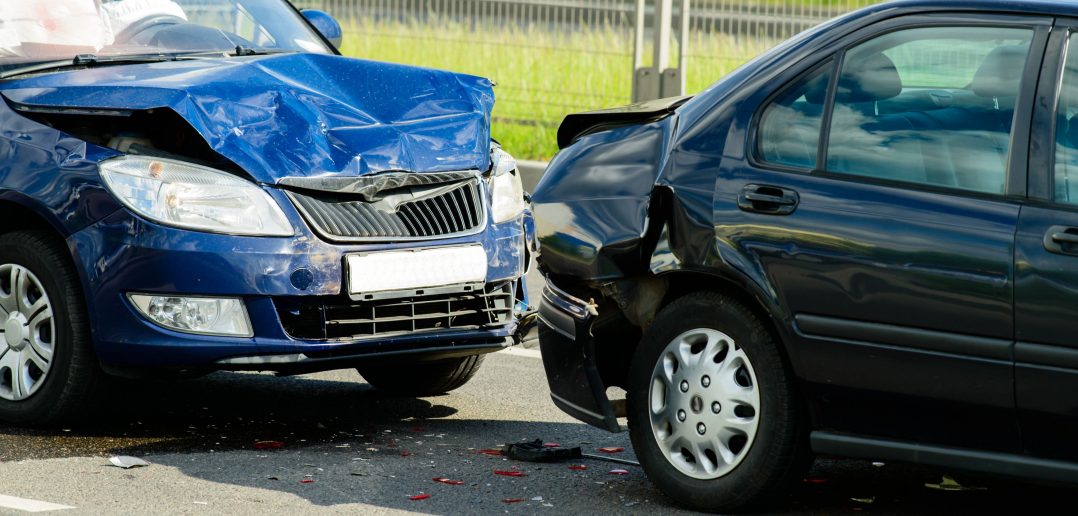Crash for cash schemes remain a “real and growing” threat for drivers according to vehicle protection and management technology provider, AX.
Data from industry body, Cifas, shows that motor insurance fraud is one of the fastest growing categories of insurance fraud in the UK.
Last year, the fraud data sharing organisation revealed that fraudulent car collision claims increased 45% year-on-year – well above an average of 27% across all categories of insurance fraud.
While the statistics suggest the problem is getting worse, reflecting the growing willingness of fraudsters to use every technique at their disposal to profit from the motor industry, AX suggests that drivers should educate and protect themselves and their vehicles.
Director of Investigative Services at AX, Neil Thomas, said: “Criminals will do anything to milk the motor industry and drivers, evolving their tactics to keep people guessing and avoid detection. We can’t completely stamp out their activities, but we can collectively do more to curtail what is a real and growing danger to drivers. Recent experience has shown how some criminals have used the Covid-19 pandemic lockdown to plan motor insurance frauds, and they are now intent on cashing in at the expense of innocent motorists.”
With crash for cash schemes – where fraudsters stage non-fault collisions specifically in order to file insurance claims – among the most prevalent types of insurance fraud, AX explains the different tactics which the Insurance Fraud Bureau (IFB) says cost the industry around £340 million a year and what can be done to minimise the risk.
THE DIFFERENT TYPES OF CRASH-FOR-CASH SCHEMES
Experts, including the ABI (Association of British Insurers) and AX, agree there are three main categories of crash for cash schemes: staged collisions , ghost collisions and induced collisions .
- Staged collisions
Fraudsters intentionally damage vehicles to give the impression that a real crash has occurred. This could involve taking a sledgehammer to a parked car, or even intentionally crashing two vehicles – whatever it takes to fabricate the evidence.
- Ghost collisions
While not strictly a crash for cash scheme, here a fraudster submits a totally fictional claim for a collision that never took place. It is like a staged collision except paper-based, taking advantage of instances where claims are never fully investigated.
- Induced collisions
Finally, the most notorious tactic is the induced collision. This is where the fraudster drives in an erratic or manipulative way near innocent motorists, hoping to engineer crashes that appear legitimate.
The most reported technique used to induce collisions is braking hard while driving in front of another car, causing a rear-end collision. However, experts at AX have highlighted other, more sophisticated techniques:
- Flash for crash: where criminals flash their lights at junctions to let other drivers out, only to crash into them on purpose.
- Hide and crash: where criminals hide in a driver’s blind spot before moving in front and slamming on the brakes
- Crash for ready cash: where the fraudster extorts cash from the driver at the roadside rather than through their insurer
TIPS TO GUARD AGAINST CRASH FOR CASH SCHEMES
What can drivers and fleets do to protect their vehicles from crash for cash schemes? These are AX’s key recommendations for private motorists as well as commercial and dealer fleet managers:
- Learn / teach drivers to recognise the warning signs
To reduce the risk of induced collisions, drivers and fleet managers should learn the warning signs of these schemes.
For example, it is often possible to identify cars used in traditional slam-on collisions because they have rear-end damage from previous scams, or because the fraudsters have intentionally disabled their brake lights to increase the chances of a collision. Also watch out for erratic driving and passengers looking back as they could be waiting to tell the driver when to slam the brakes on.
- Investigate Collisions and claims
When a collision happens, drivers should gather evidence safely at the scene. Note key facts and where possible identify potential witnesses
The phrase Road Traffic Collision (RTC) replaced Road Traffic Accident in Policing some time ago, the logic being very few, if any, collisions happen by accident. A good investigator can nearly always identify the reason, whether that is driver error, mechanical failure or fraudulent activity; it is vital that fleet managers have this evidence at hand quickly to prove fraudulent behaviour from the third party. For individuals and fleets that suspect they may have been the victim of a crash-for-cash scheme, report this to the police at the time and to their own Cheatline service.
Early identification of fraud can save companies significant amounts of money, stop fraudsters committing repeated scams and help authorities bring the criminals to justice.
- Invest in dashcams, vehicle tracking devices and telematics
Finally, the use of technology can be instrumental in helping fraud investigators establish how the collision happened.
Any driver can invest in these technologies, and a fleet manager who suspects they may have been targeted by a staged collision can use telematics data to instantly verify whether the damage happened at the time and location reported by the claimant.
It is important not to assume telematics is a silver bullet, however. While modern vehicle tracking devices collect a vast amount of information, making sense of this data takes time and expertise.
For this reason, individuals and fleet managers hoping to stem the tide of fraudulent motor insurance claims and crash-for-cash scams should ensure they also have specialist vehicle crime investigators on their side.
For more information on motor fraud and AX services, please visit: https://www.ax-uk.com/innovation










